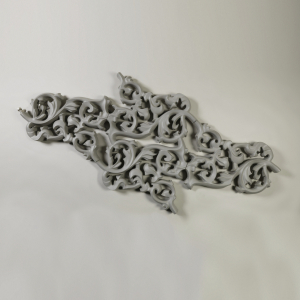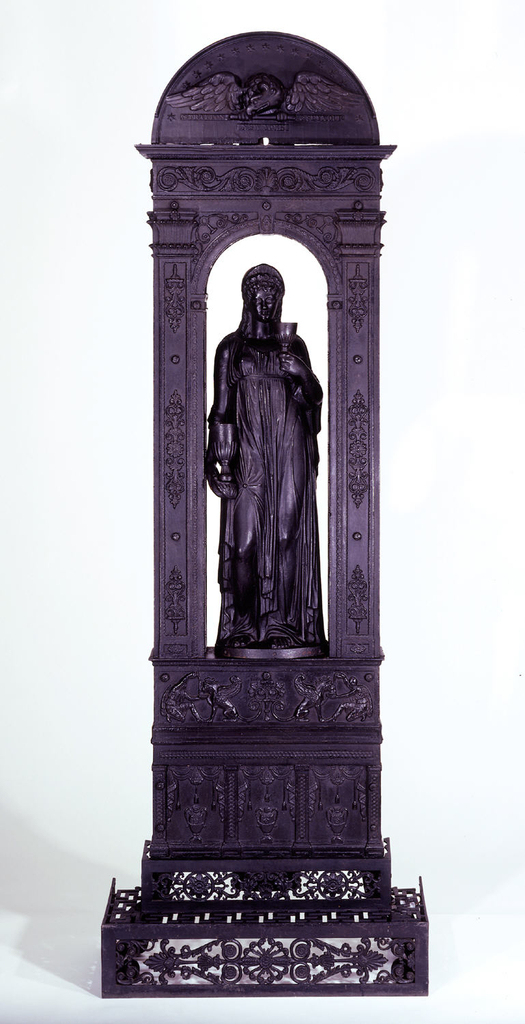The whole idea that a radiator could be as large or as decorative as this one seems extraordinary to most twenty-first century viewers. However, if one thinks about it, Joris Laarman created the Heatwave radiator in 2007, formed of rococo-like scrolls in a newer medium, poly-concrete, to decorate a wall.

Heatwave radiator, 2007. Designed by Joris Laarman, manufactured by Jaga N.V. Molded polyconcrete (polyester concrete), aluminum. Gift of Jaga N.V. 2008-13-1-a/c
To correctly appreciate the context of this radiator is to realize that this is really a product of a society for whom comfort was increasingly important. To show off that you could afford to heat your house without large wood-burning fireplaces or ugly and small cast-iron stoves, this radiator displays the concept of education and ornament all in one. The figure is part of the Greek revival era, in which antiquity — both of the Roman era and especially Greece — were idolized for the elegance and proportion of their architecture, and the latter for its concepts of a republic. This piece has a removable figure of Hebe, cupbearer to the Greek gods, and goddess of youth and the household. What more appropriate figure to preside over the elegant salon or central entertaining area than the goddess of the household radiating warmth!
The parlor, by the time this radiator was produced, had become a place where both men and women received guests, with richly upholstered furniture set out into the room (as opposed to against the walls as in earlier periods), all on a decorative carpet, which added warmth to the surroundings as well.
Radiators such as these were also called “Dumb Stoves,” or hot air circulators, not because they were thought stupid, but because they made less noise. This was achieved by not having their own fireboxes but being connected by a stovepipe to a cast iron parlor stove on the floor below. Their job was to radiate the hot air from the parlor stove. Interestingly, the firm of Stratton & Seymour appears to have been founded in Albany as H.C. Nott & Co, before that firm moved to Manhattan in about 1830. The Albany area featured a number of iron and other metal works. In addition, a man named Alonzo Blanchard of Albany, a cabinet maker by trade, received an invention patent for a “new and useful Dumb or Radiator Stove” in 1841 and a design patent two years later. These stoves featured standing figures. One by him depicts George Washington in a long Roman toga draped over one side, his uniform showing on the other. The patriotic theme is like that of the American eagle and thirteen stars on the top of the one in Cooper Hewitt’s collection.
This radiator will be featured in the Hewitt Sisters Collect exhibition beginning December 12, 2014.
Sarah D. Coffin is Curator and Head of the Product Design and Decorative Arts Department at Cooper Hewitt, Smithsonian Design Museum. She is Project Manager for the Second Floor gallery exhibitions.
